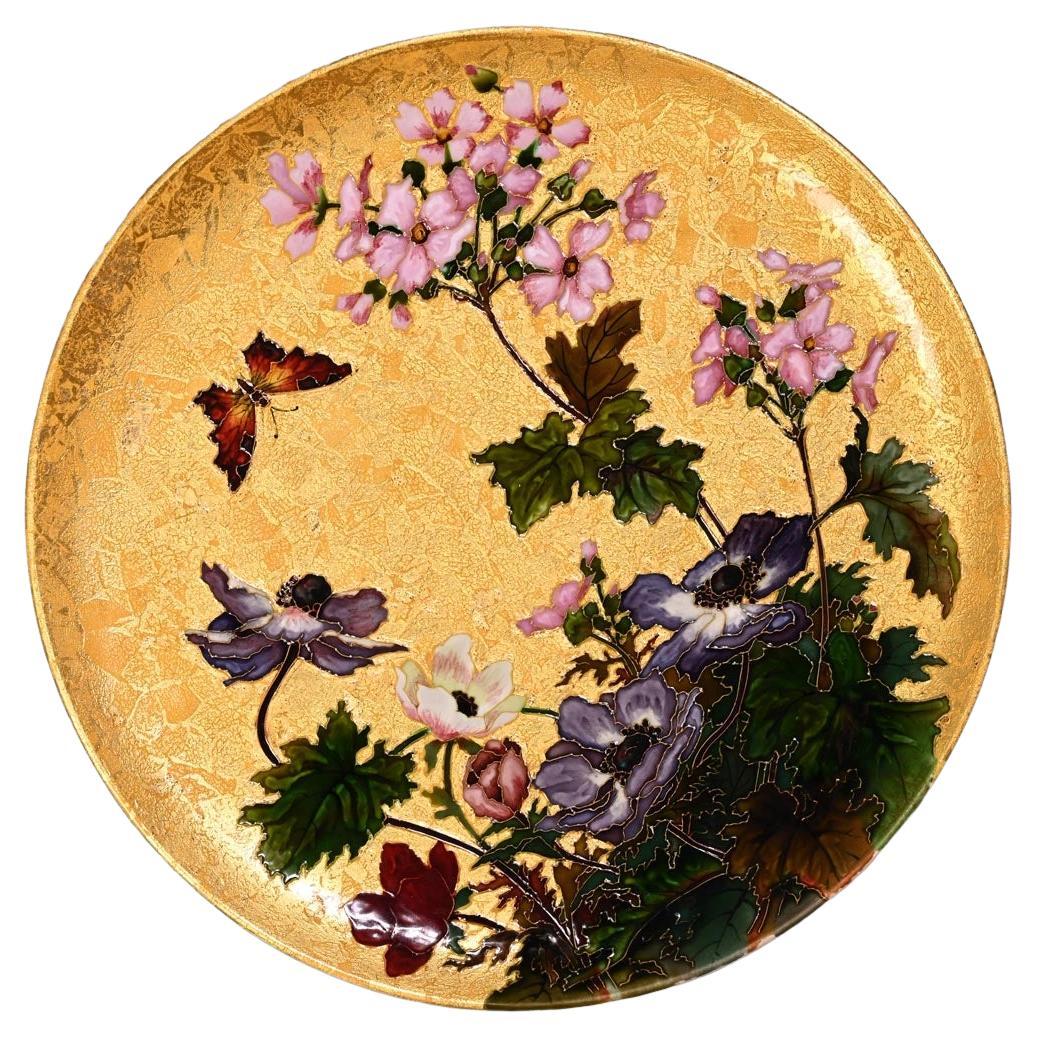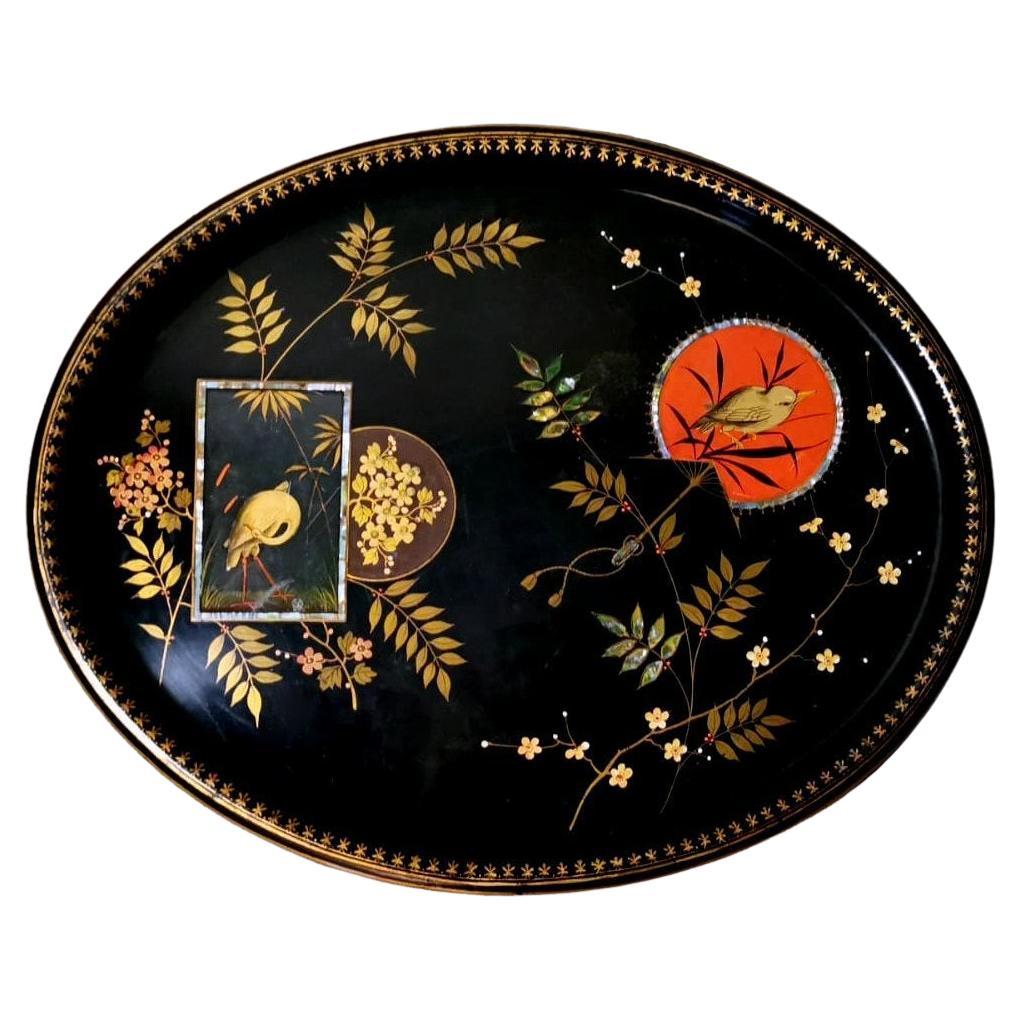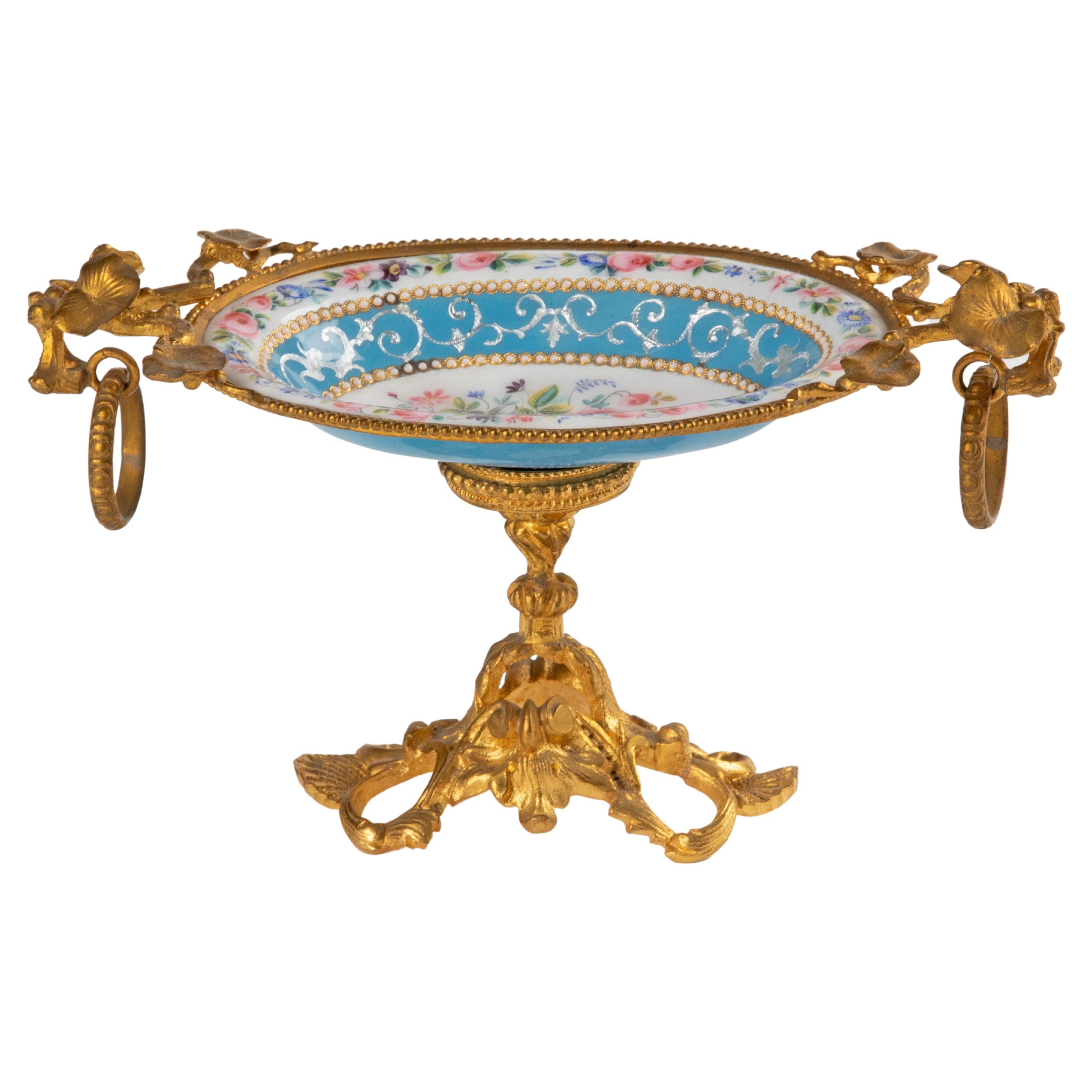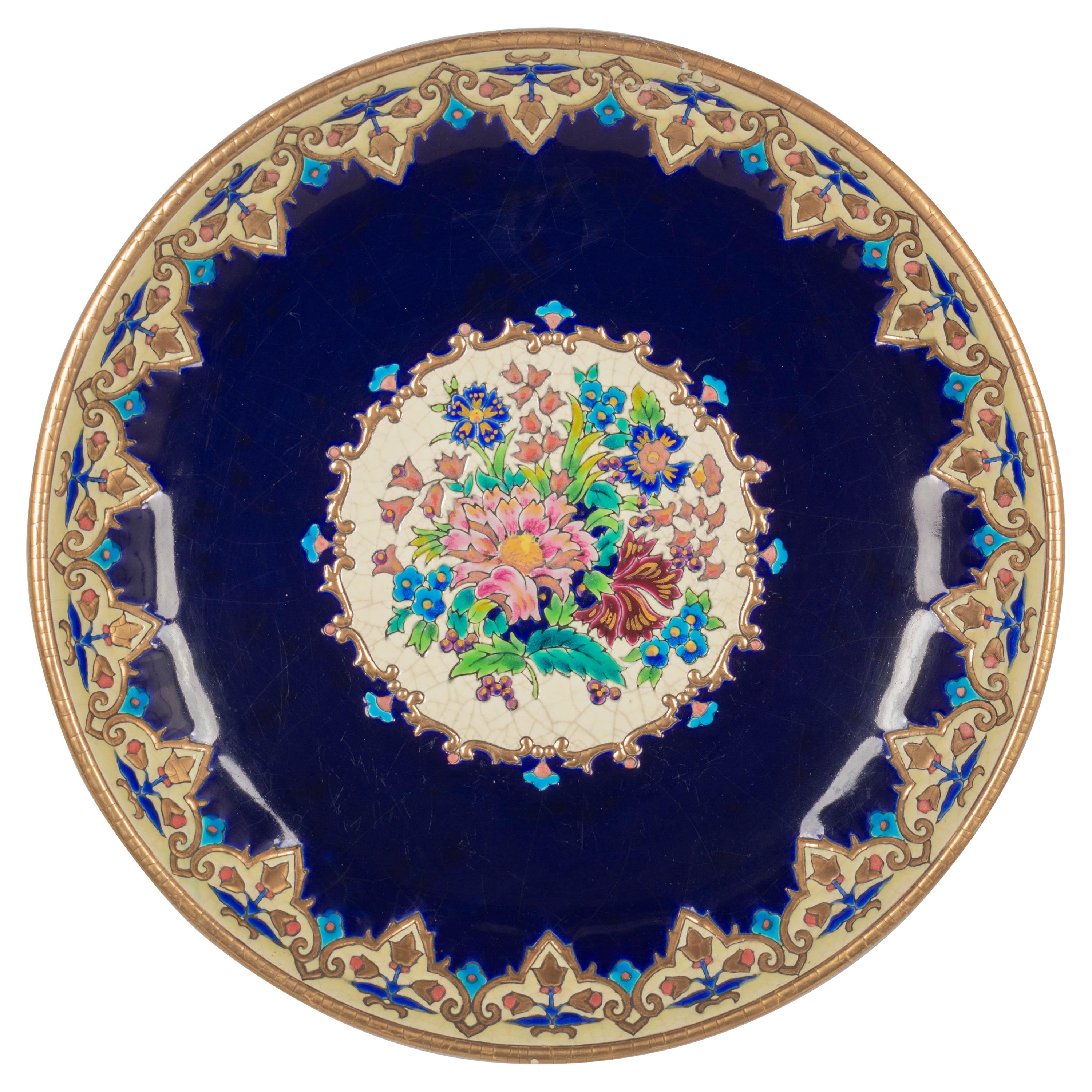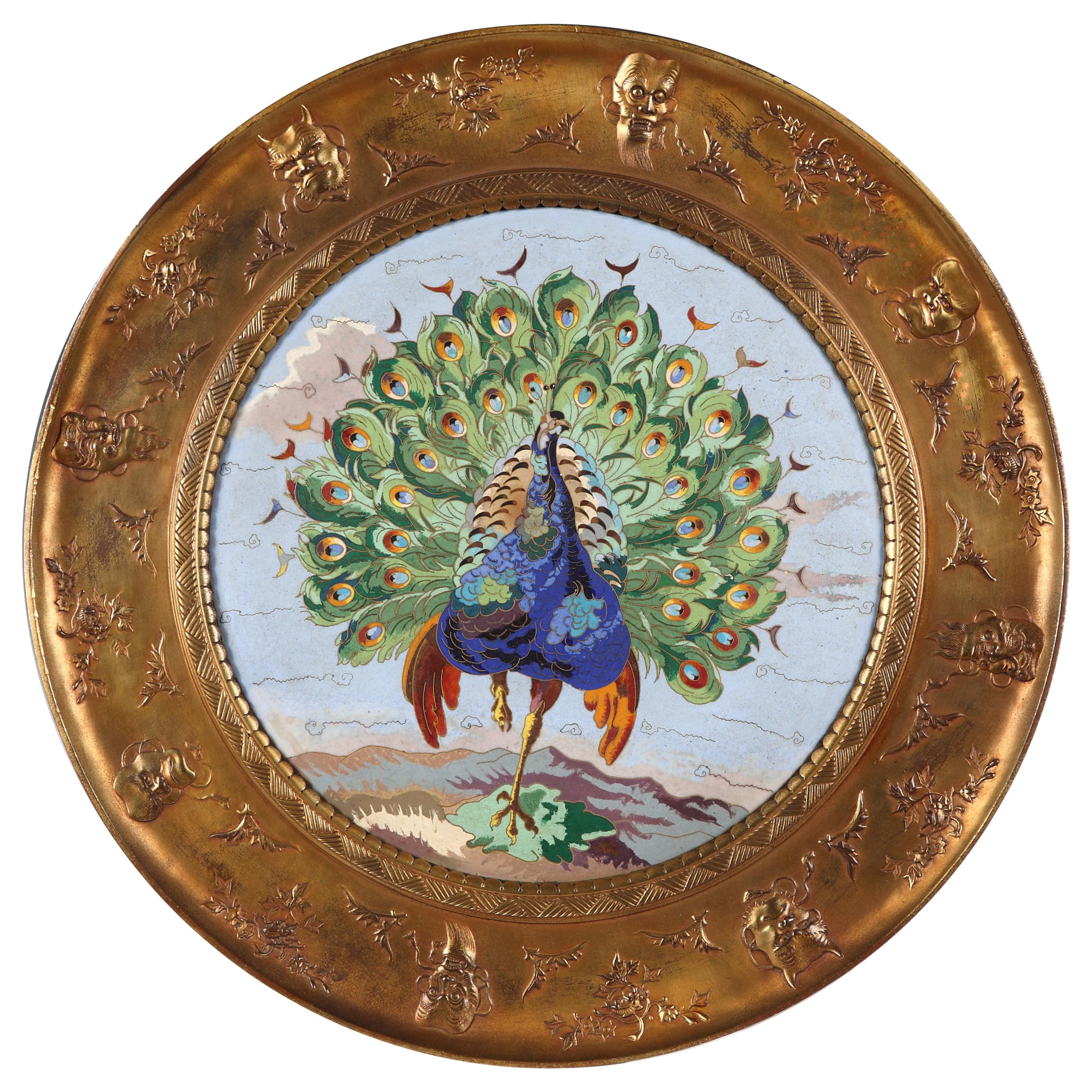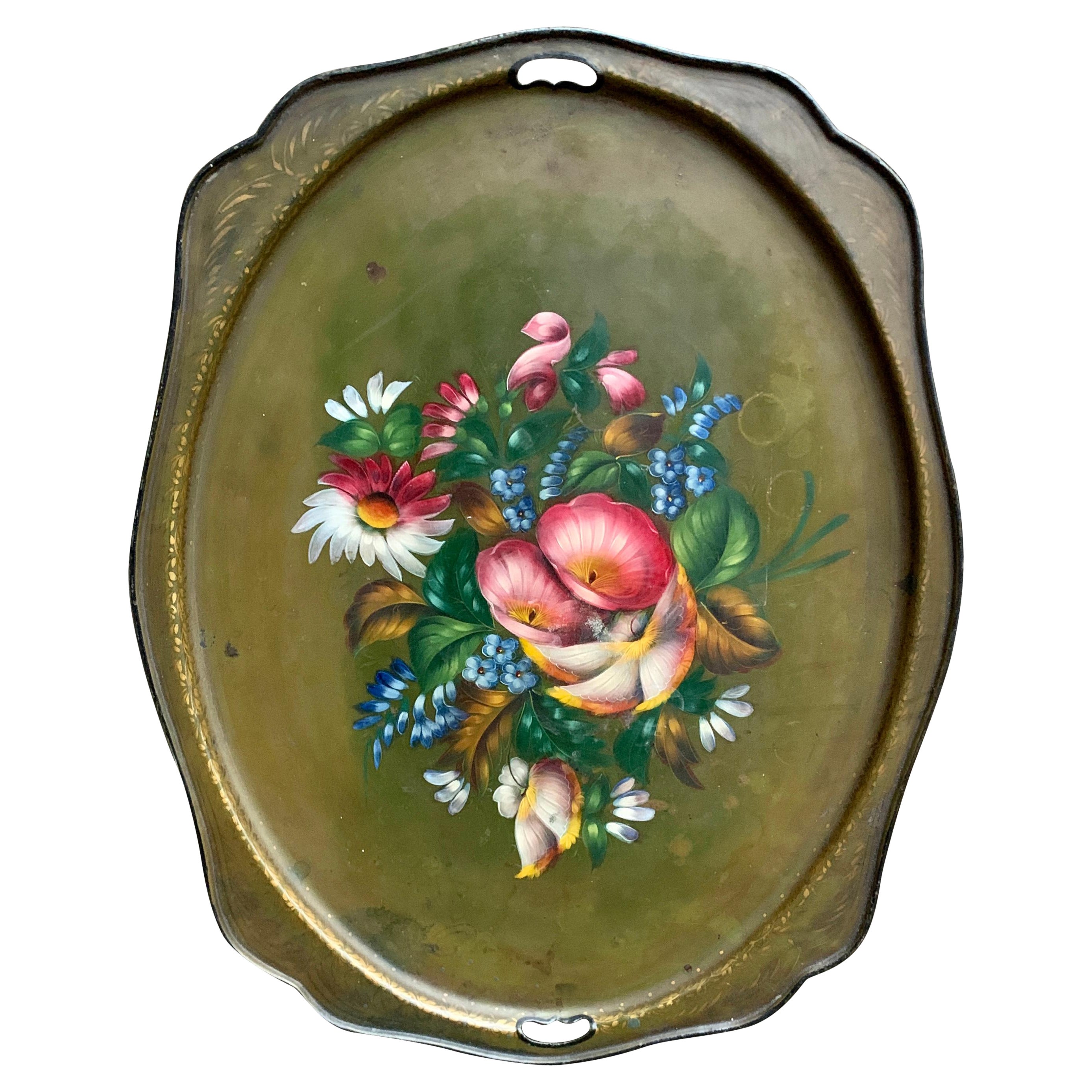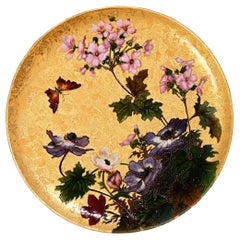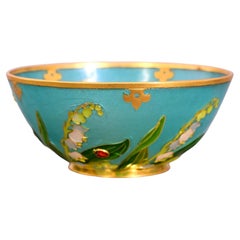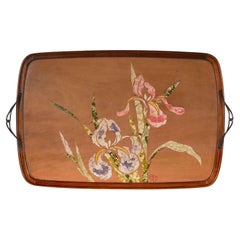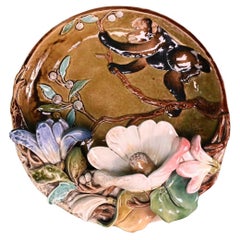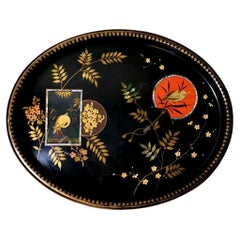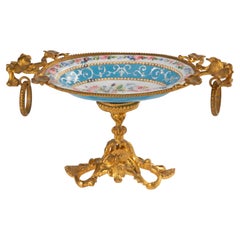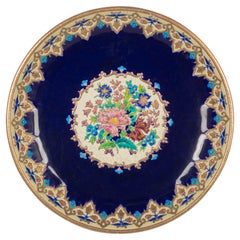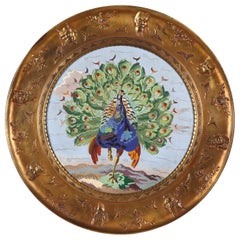Items Similar to Félix Optat Milet, Large enamelled dish on a gold background, 19th century
Want more images or videos?
Request additional images or videos from the seller
1 of 15
Félix Optat Milet, Large enamelled dish on a gold background, 19th century
$9,207.40per set
£6,916.85per set
€7,800per set
CA$12,905.13per set
A$14,017.31per set
CHF� 7,421per set
MX$169,250.35per set
NOK 92,643.57per set
SEK 87,765.07per set
DKK 59,406.79per set
About the Item
This beautiful dish with a gold background and flower decoration signed “Milet Sèvres” was made by Félix Optat Milet in polychrome enamelled ceramic and gold background. It is treated in the manner of a cloisonné. This technique was also used by his son Paul.
The two plates respectively feature a group of white lilies contrasting with the coloured irises at their feet (red, mauve, blue and pink) on the one hand, and a dragonfly close to a fuchsia plant on the other hand.
Félix Optat Milet (1838-1911) descended from a line of potters from the village of Bully. In 1862, he joined the Manufacture de Sèvres as a modeller, joining his brother Ambroise, director of kilns and pastes. Optat then became a decorator. In 1866, after applying to the Sèvres Town Hall, he built a kiln very close to the Manufacture. This independent business enabled him to fire his own earthenware and stoneware, which was sold in the shop attached to the factory, and to employ turners, decorators and sales staff. Paul Milet took over from his father at the head of the company in 1890, followed by his grandson Henri Milet in 1931. The company closed in 1971.
At the 1889 Universal Exhibition, Milet won a gold medal for a very large pair of vases (1.3 metres high). It was also in the 1880s that Félix Optat Milet and Clément Massier founded the Delvaux boutique (18, rue royale, Paris), which continued until the 1970s. Throughout his career, Félix Optat Milet benefited from his collaborations with the artists of his time and from his own creativity.
- Creator:Paul Milet (Artist)
- Dimensions:Height: 1.58 in (4 cm)Diameter: 9.06 in (23 cm)
- Sold As:Set of 2
- Style:Napoleon III (Of the Period)
- Materials and Techniques:Ceramic,Enameled
- Place of Origin:
- Period:
- Date of Manufacture:1875
- Condition:
- Seller Location:SAINT-OUEN-SUR-SEINE, FR
- Reference Number:Seller: 157301stDibs: LU7662244887542
About the Seller
No Reviews Yet
Recognized Seller
These prestigious sellers are industry leaders and represent the highest echelon for item quality and design.
1stDibs seller since 2022
5 sales on 1stDibs
Typical response time: 16 hours
- ShippingRetrieving quote...Shipping from: SAINT-OUEN-SUR-SEINE, France
- Return Policy
Authenticity Guarantee
In the unlikely event there’s an issue with an item’s authenticity, contact us within 1 year for a full refund. DetailsMoney-Back Guarantee
If your item is not as described, is damaged in transit, or does not arrive, contact us within 7 days for a full refund. Details24-Hour Cancellation
You have a 24-hour grace period in which to reconsider your purchase, with no questions asked.Vetted Professional Sellers
Our world-class sellers must adhere to strict standards for service and quality, maintaining the integrity of our listings.Price-Match Guarantee
If you find that a seller listed the same item for a lower price elsewhere, we’ll match it.Trusted Global Delivery
Our best-in-class carrier network provides specialized shipping options worldwide, including custom delivery.More From This Seller
View AllFélix Optat Milet, Large enamelled dish on a gold background, 19th century
Located in SAINT-OUEN-SUR-SEINE, FR
This beautiful dish with a gold background and flower decoration signed “Milet Sèvres” was made by Félix Optat Milet in polychrome enamelled ceramic and gold background. It is treate...
Category
Antique 1880s French Napoleon III Decorative Dishes and Vide-Poche
Materials
Ceramic
THESMAR André-Fernand (1843-1912) hemispherical cup in gold plique-à-jour enamel
By André Fernand Thesmar
Located in SAINT-OUEN-SUR-SEINE, FR
Fernand Thesmar (1843-1912) was a French painter and master enameller specialising in motifs on glass and porcelain. Famous for having breathed new life into the rare and demanding t...
Category
Early 20th Century French Belle Époque Ceramics
Materials
Enamel
Art Nouveau tray with De Scagliola decoration, Signed
Located in SAINT-OUEN-SUR-SEINE, FR
"Art Nouveau tray with scagliola decoration, signed
Rare Art Nouveau tray decorated with flowers in scagliola. Very nice work. Fine handles in the Art Nouveau spirit.
Bears the unide...
Category
20th Century French Art Nouveau Tray Tables
Materials
Scagliola, Wood
Émile GALLÉ, Ornamental Dish With A Monkey Climbing Among Flowers
By Émile Gallé
Located in SAINT-OUEN-SUR-SEINE, FR
This highly original polychrome enamel ceramic dish featuring a monkey on a flowering branch was created by Émile Gallé, based on a model designed around 1878-1880.
Considered the f...
Category
Antique Late 19th Century French Art Nouveau Ceramics
Materials
Ceramic
Edmond LACHENAL for L'ESCALIER DE CRISTAL, Bowl decorated with flowers
By Edmond Lachenal, L'Escalier de Cristal
Located in SAINT-OUEN-SUR-SEINE, FR
This elegant ceramic bowl was created by Edmond Lachenal for L’Escalier de Cristal around 1890. It bears his signature.
A ceramist and painter, Edmond Lachenal is known for his past...
Category
Antique Late 19th Century French Japonisme Decorative Bowls
Materials
Earthenware
Pair of porcelain vases mounted in gilt bronze, circa 1890
By Manufacture Nationale de Sèvres, Charles Labarre
Located in SAINT-OUEN-SUR-SEINE, FR
This very beautiful pair of ovoid and covered vases was made of Sèvres porcelaine and mounted in gilt bronze. The two vases depicts a painted decor b...
Category
Antique 19th Century French Napoleon III Vases
Materials
Bronze
You May Also Like
Napoleon III Style French "Chinoserie" Hand-Painted Metal Tray
Located in Prato, Tuscany
We kindly suggest that you read the entire description, as with it we try to give you detailed technical and historical information to ensure the authenticity of our objects.
Origina...
Category
Antique Late 19th Century French Napoleon III Platters and Serveware
Materials
Iron
19th Century Small Dish Hand Painted Enamel and Ormolu Bronze
Located in Casteren, Noord-Brabant
An elegant small footed dish.
Made of gilded bronze with an enameled, hand painted dish in the centre.
The dish is in good condition.
Dimensions: 17 x 9 cm and 9 cm tall.
Made in Fra...
Category
Antique 1890s French Napoleon III Decorative Dishes and Vide-Poche
Materials
Bronze, Enamel
French Longwy Cloisonné Enamel Ceramic Bowl
By Faïenceries et Emaux de Longwy
Located in Winter Park, FL
A French Art Deco Longwy large ceramic centerpiece bowl, hand-painted in the style of Chinoiserie cloisonné enamel. Dark cobalt blue ground with ...
Category
20th Century French Art Deco Delft and Faience
Materials
Ceramic
Aesthetic Movement Enameled Plate Attributed to Elkington and A. Willms, c. 1875
By W. Albert Willms, Elkington & Co.
Located in PARIS, FR
Important tray made in gilded bronze and “cloisonné” enamel attributed to Elkington and Willms. Ornamented with a centering polychrome enameled peacock plaque, made of very high standard quality, mounted on a gilt-bronze dish, decorated in relief with Japanese Nô theater masks.
The great Birmingham firm of Elkingtons, was largely the creation of George Richards Elkington (1800-1865), who worked from 1824 in Birmingham as a manufacturer of silver-mounted scent bottles. By 1829 the business had expanded sufficiently for a branch to have been established in London. In the late 1830s the Elkingtons began making experiments to apply the principles of electro-metallurgy to gilding and plating with silver and in 1840 the patent was at last taken out. Elkingtons owed their rise to a position amongst the most important silversmiths of the country to their exploitation of this new process and the two of the most famous designers then employed, both of them French, Albert Wilms (1827-1899) and Morel-Ladeuil (1820-1888), who helped to make Elkingtons’ reputation with their elaborate exhibition pieces.
Albert Willms was apprenticed as modeler and engraver to Klagman, Dieterle and Constant in Paris before working for Morel & Co. in London in 1848. On his return to Paris he was employed by the great Parisian silversmiths including Christofle and Froment-Meurice, for whom he designed pieces to be presented at the 1855 Universal Exhibition in Paris. It was during this period that he joined the firm of Elkington in London as head decorator. Elkington was soon to become one of the first to produce refined pieces in “champlevé” enamel in the Chinese and Japanese styles, which were presented with great success at the London Universal Exhibition in 1862 (see Masterpieces of Industrial Art & Sculpture at the International Exhibition 1862, J.B. Waring, London, 1863, III, pl. 211). Willms’ “champlevé” enamels could not be compared, however, with the delicate “cloisonné” enamels exhibited by Japan at the Universal Exhibition in Paris in 1867. This explains why Elkington adapted the ancient Japanese technique to produce pieces according to European taste and custom. Followings the 1867 Exhibition all the major European artists rivaled in ingenuity for the 1873 Universal Exhibition in Vienna. In London Albert Willms presented his luxurious vases and cups in “cloisonné” enamel for Elkington (see Illustrations of Art Manufacturers in the Precious Metals exhibited by Elkington & Co., Inventors, Patentees and Manufactures of electroplate, 1873), whilst in Paris, Ferdinand Thesmar (1843-1912) produced in the workshops of Ferdinand Barbedienne (1810-1892) a tray decorated with a golden pheasant in “cloisonné” enamel on copper...
Category
Antique 1870s English Aesthetic Movement Decorative Dishes and Vide-Poche
Materials
Enamel, Bronze
$15,935
Free Shipping
19th Century French Toleware Painted Tray
Located in Haddonfield, NJ
French hand painted toleware tray of the Napoleon the III era, circa 1850's. The hand-painted French metal tray is decorated with flowers and leaves o...
Category
Antique 19th Century French Napoleon III Tableware
Materials
Metal
19th Century French Hand Painted and Gilt Gold Decorated Porcelain Wall Plate
Located in Tarry Town, NY
Transport yourself to the elegance of early 19th-century France with this exquisite hand-painted and gilt gold decorated porcelain wall plate, crafted by renowned artisans in Limoges...
Category
Antique Early 1800s French Decorative Bowls
Materials
Gold
More Ways To Browse
Dragonfly Antique
Pair Of French Pink Vases
Sevres Signed
Paul Milet
Milet Sevres
Blue Gold And Mauve Vase
1960 Dansk Dishes
Anastasio Home
Andrea Ferolla
Antique Lemon Dishes
Arno Scheiding
Bernardaud Jewelry
Blakely Dishes
Ceramic Blue Oblong Large
Chez Dede
Cobalt Lindner
Cranberry Candy Dish
Depression Glass Bowls
